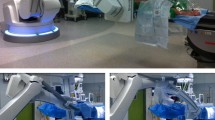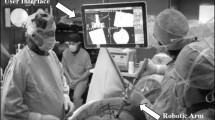Abstract
Study Design
Retrospective case series.
Objective
The objective of this study was to determine the safety of postoperative radiographs to assess screw placement.
Summary of Background Data
Previously defined criteria are frequently employed to determine pedicle screw placement on intraoperative supine radiographs. Postoperatively, radiographs are typically used as a precursor to identify screws of concern, and a computed tomographic (CT) is typically ordered to confirm screw safety.
Methods
First, available postoperative PA and lateral radiographs were reviewed by 6 independently blinded observers. Screw misplacement was assessed using previously defined criteria. A musculoskeletal radiologist assessed all CT scans for screw placement. Pedicle screw position was classified either as acceptable or misplaced. Misplacements were subclassified as medial, lateral, or anterior.
Results
One hundred four patients with scoliosis or kyphosis underwent posterior spinal fusion and had postoperative CT scan available were included. In total, 2,034 thoracic and lumbar screws were evaluated. On CT scan, 1,772 screws were found to be acceptable, 142 were laterally misplaced, 30 medially, and 90 anteriorly. Of the 30 medially placed screws, 80% to 87% screws were believed to be in positions other than medial, with a median of 73% (63% to 92%) of these screws presumed to be in normal position. Similarly, of the 142 screws placed laterally, 49% to 81% screws were identified in positions other than lateral, with a median of 77% (59% to 96%) of these screws felt to be in normal position. Of the 90 anteriorly misplaced screws, 16% to 87% screws were identified in positions other than anterior, with 72% (20% to 98%) identified as normal. The criteria produced a median 52% sensitivity, 70% specificity, and 68% accuracy across the 6 observers.
Conclusion
Radiograph is a poor diagnostic modality for observing screw position.
Level of Evidence
Level IV.
Similar content being viewed by others
References
Liljenqvist UR, Halm HF, Link TM. Pedicle screw instrumentation of the thoracic spine in idiopathic scoliosis. Spine 1997;22:2239–45.
Suk SI, Kim WJ, Lee SM, et al. Thoracic pedicle screw fixation in spinal deformities: are they really safe? Spine 2001;26:2049–57.
Upendra BN, Meena D, Chowdhury B, et al. Outcome-based classification for assessment of thoracic pedicular screw placement. Spine 2008;33:384–90.
Gertzbein SD, Robbins SE. Accuracy of pedicular screw placement in vivo. Spine 1990;15:11–4.
Belmont Jr PJ, Klemme WR, Dhawan A, Polly Jr DW. In vivo accuracy of thoracic pedicle screws. Spine 2001;26:2340–6.
Kim YJ, Lenke LG, Cheh G, Riew KD. Evaluation of pedicle screw placement in the deformed spine using intraoperative plain radiographs: a comparison with computerized tomography. Spine (Phila Pa 1976) 2005;30:2084–8.
Kim YJ, Lenke LG, Bridwell KH, et al. Free hand pedicle screw placement in the thoracic spine: is it safe? Spine 2004;29:333–42; discussion 342.
Benzel EC. Spine surgery 2-vol set: techniques, complication avoidance, and management (expert consult-online). London: Elsevier Health Sciences; 2012.
Vallespir GP, Sanper I, Burgos J, et al. Reliability of intraoperative plain radiographic criteria to assess pedicle screw position in scoliosis surgery. A comparison to computerized tomography. Monterey, CA: Scoliosis Research Society; 2016.
Ferrick MR, Kowalski JM, Simmons Jr ED. Reliability of roentgenogram evaluation of pedicle screw position. Spine 1997;22:1249–52; discussion 1253.
Berlemann U, Heini P, Muller U, et al. Reliability of pedicle screw assessment utilizing plain radiographs versus CT reconstruction. Eur Spine J 1997;6:406–10.
Whitecloud TS, Skalley TC, Cook SD, Morgan EL. Roentgenographic measurement of pedicle screw penetration. Clin Orthop Relat Res 1989;245:57–68.
Weinstein JN, Spratt KF, Spengler D, et al. Spinal pedicle fixation: reliability and validity of roentgenogram-based assessment and surgical factors on successful screw placement. Spine 1988;13:1012–8.
Farber GL, Place HM, Mazur RA, et al. Accuracy of pedicle screw placement in lumbar fusions by plain radiographs and computed tomography. Spine 1995;20:1494–9.
Foxx KC, Kwak RC, Latzman JM, Samadani U. A retrospective analysis of pedicle screws in contact with the great vessels. J Neurosurg Spine 2010;13:403–6.
Wegener B, Birkenmaier C, Fottner A, et al. Delayed perforation of the aorta by a thoracic pedicle screw. Eur Spine J 2008;17(suppl 2):S351–4.
Fujita T, Kostuik JP, Huckell CB, Sieber AN. Complications of spinal fusion in adult patients more than 60 years of age. Orthop Clin North Am 1998;29:669–78.
Vanichkachorn JS, Vaccaro AR, Cohen MJ, Cotler JM. Potential large vessel injury during thoracolumbar pedicle screw removal. A case report. Spine 1997;22:110–3.
Di Silvestre M, Parisini P, Lolli F, Bakaloudis G. Complications of thoracic pedicle screws in scoliosis treatment. Spine 2007;32:1655–61.
Sarwahi V, Wendolowski SF, Gecelter R, et al. Are we underestimating the significance of pedicle screw misplacement? Spine (Phila Pa 1976) 2016;41:E548–55.
Wollowick A, Sugarman E, Nirenstein L, et al. Incidence, distribution, and surgical relevance of abnormal pedicles in normal and deformed spines: a CT based study of 6,256 pedicles. Spine 2010;10:S3–4.
Lehman Jr RA, Lenke LG, Keeler KA, et al. Computed tomography evaluation of pedicle screws placed in the pediatric deformed spine over an 8-year period. Spine 2007;32:2679–84.
Hoffman DA, Lonstein JE, Morin MM, et al. Breast cancer in women with scoliosis exposed to multiple diagnostic x rays. J Natl Cancer Inst 1989;81:1307–12.
Author information
Authors and Affiliations
Corresponding author
Additional information
Author disclosures
VS (reports other from Medtronic, other from Precision Spine, other from Precision Spine, outside the submitted work); SA (none); TA (none), SW (none); RG (none); YL (none); BT (none).
No funding was secured for this study.
The authors wish to acknowledge Gordon Sims and Lana Nirenstein for their contribution and effort towards the completion of this study.
Rights and permissions
About this article
Cite this article
Sarwahi, V., Ayan, S., Amaral, T. et al. Can Postoperative Radiographs Accurately Identify Screw Misplacements?. Spine Deform 5, 109–116 (2017). https://doi.org/10.1016/j.jspd.2016.10.007
Received:
Revised:
Accepted:
Published:
Issue Date:
DOI: https://doi.org/10.1016/j.jspd.2016.10.007




